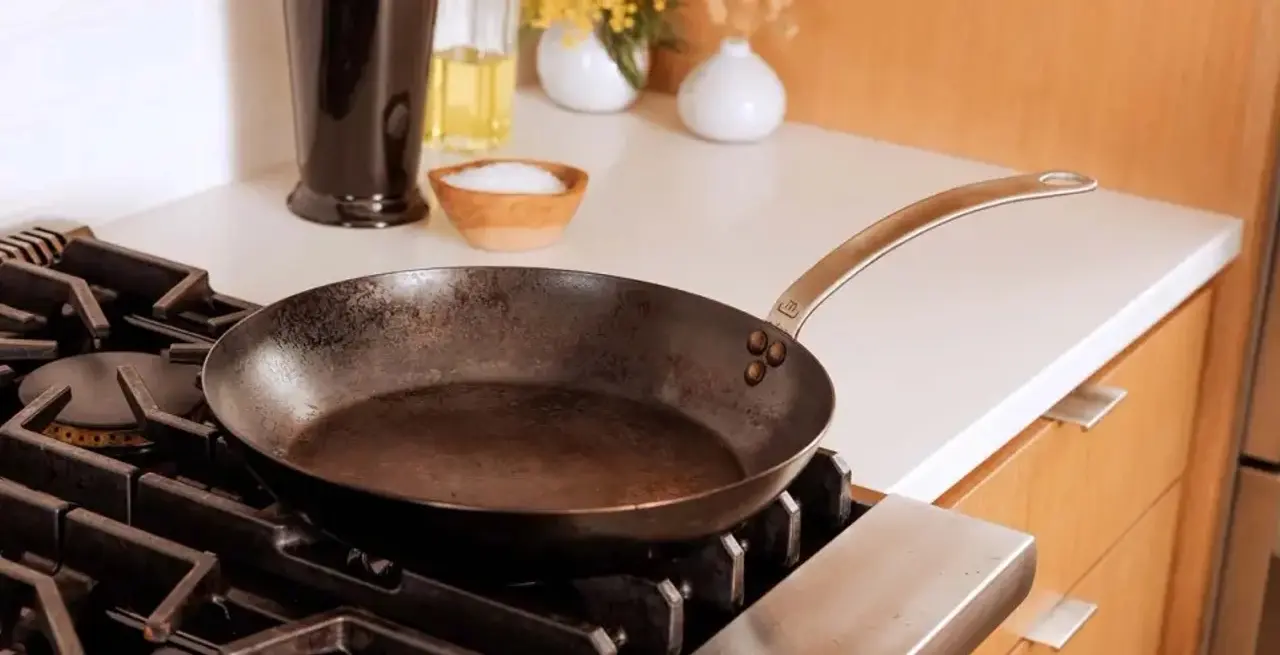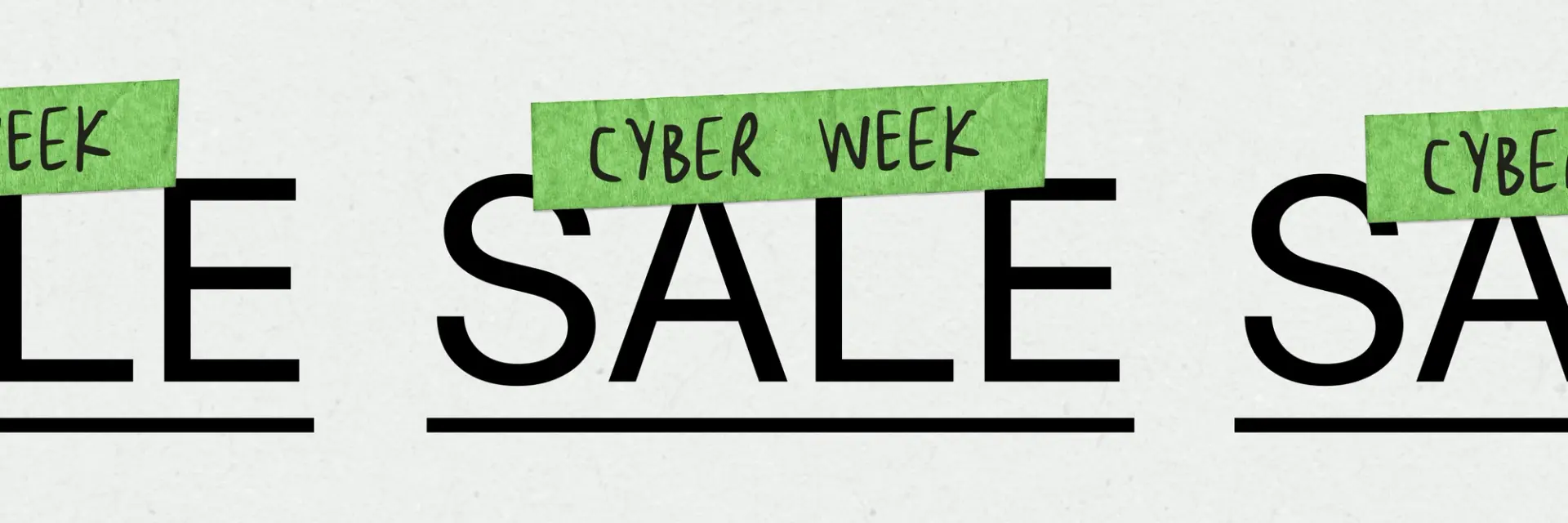Before buying any piece of cookware, it’s important to do your homework. How this tool is different from cookware you already own, how to care for it, what you can cook with it, and how long it’ll last are all important factors to consider when adding a new item to your kitchen.
This is definitely the case for carbon steel cookware, which has been a fixture in European kitchens for centuries and is becoming more prevalent in home and professional kitchens in the USA. If you’re debating adding a carbon steel pan to your lineup, then use this guide to walk you through everything you need to know so you’re set up for success before hitting “purchase.”
First, What Is Carbon Steel?
We like to describe carbon steel as a combination of the best parts of stainless steel and cast iron cookware—with the heat retention and non stick properties of cast iron, paired with the cooking speed and heat control of stainless steel.
This combination means it can execute different kitchen tasks including low or high-heat cooking and oven finishing, while still remaining lightweight and easy to maneuver around the cooktop or in and out of the oven. In short, it’s one of the most versatile cookware materials on the market.
How Is it Made?
Our Carbon Steel is made in a French factory that has been manufacturing carbon steel since the 1800’s. It's composed of 99% iron, 1% carbon.
To make our pans, an annealed square of iron is cut into a circle and shaped into the body of your pan that includes high, curved walls. The Stainless Steel handle is then attached to the body using three French rivets that can hold up to one ton of weight. Because the pan itself is made from one piece of metal, it heats evenly and quickly—unlike pans that are made from multiple pieces.
Is it Safe?
Carbon steel is 100% safe—enough that if you really wanted to, you could eat directly from your pan. It’s constructed using non-toxic, corrosion resistant metals that won’t leach into your food. If your pan rusts or becomes scratched, you’ll just need to remove the rust or fill in the scratch with more seasoning, which you can find out more about in our seasoning guide.
Why Does It Need to Be Seasoned?
Much like unfinished cast iron, carbon steel must be seasoned prior to first use—unless you're using a preseasoned pan, that is.
This involves a layer of oil that becomes polymerized, or transformed from a liquid to a hardened solid when exposed to high heat, to create a seal on the pan. The initial seasoning, along with periodic reseasoning, helps seal in the microscopic pores of the metal that helps prevent rust and create a non stick surface that keeps your food from sticking, and is an important part of upkeep.
Is Caring for Carbon Steel Difficult?
While caring for carbon steel isn’t as simple as a quick wash and dry like you may be used to, it’s not complicated by any means. There are a few key things to remember when it comes to caring for your carbon steel pan, and we cover them all in our care guide.
What Can I Use Carbon Steel For?
Since our Carbon Steel Frying Pan is endlessly durable, able to handle both high and low temperatures, and is oven safe up to 1200F, this is a versatile pan that can handle just about any recipe you throw at it in the kitchen. It can develop a beautiful sear on any protein or char on any vegetable.
A few of our favorite uses beyond recipes include:
- On the Stovetop: Our Carbon Steel Frying Pan can do anything that’s expected of a frying pan, especially once its built up a non stick patina. This includes sautéing vegetables, frying eggs, and searing steaks or other meats.
- In the Oven: Since it can be exposed to temperatures up to 1200F, this pan is perfect for finishing dishes in the oven, keeping meals warm, or techniques that involve high-heat cooking like cornbread.
- Over an Open Flame: Whether you’re using the standard Carbon Steel Frying Pan or our specialty Carbon Steel Grill Frying Pan, you can grill or campfire cook to your heart’s content and make dishes like pan-roasted fish, grilled wings, or charred steak sandwiches.
Carbon Steel vs. Other Cookware Materials
Since carbon steel is often seen as a combination of stainless steel and cast iron cookware, it’s worth wondering if this is a necessary purchase if you already own either (or both) those pans. Here’s how this cookware material holds up against some of its similar counterparts.
Cast Iron
The closest relative to carbon steel in both appearance and performance is the unfinished cast iron skillet. Both are constructed of dark, iron-based metals, can withstand high temperatures, and are versatile pans that are just as at home on the stovetop as they are over a campfire.
That said, carbon steel has a significant advantage in terms of weight—a 12” carbon steel frying pan weighs only 4.5 pounds, while a Lodge cast iron skillet weighs in at 7.89 pounds. While we don’t think you need to toss out your cast iron if you have one, we prefer carbon steel when choosing between the two.
Stainless Steel
While not quite as similar as cast iron, stainless steel shares the same cooking speed and heat control as carbon steel. Both these pans heat up quickly, can handle high temperatures, and are the perfect choice for getting a beautiful sear on a protein.
We recommend not viewing these pans as competitors, but rather as complements—they both can be used for a variety of different purposes to help round out your kitchen.
Non Stick
While carbon steel develops a non stick exterior over time, a high-quality non stick pan will have this quality from the time it’s unboxed. These two materials differ from each other in many different ways, and we recommend having both as they excel at different tasks and are used for different purposes around the kitchen.
How Much Is Carbon Steel Cookware?
Carbon steel cookware can come in a wide range of prices. Our pans start at $99, depending on size. A carbon steel pan can last for decades with proper care—which in our opinion is a better choice than buying a cheaper pan and replacing it every 1–2 years once it's degraded.
Ready to Shop?
Now that you’ve done your homework and learned all about why Carbon Steel is right for you, you can feel confident when making this purchase—now you just need to decide whether you want a Frying Pan, Grill Frying Pan, or a Wok—or all three.

























